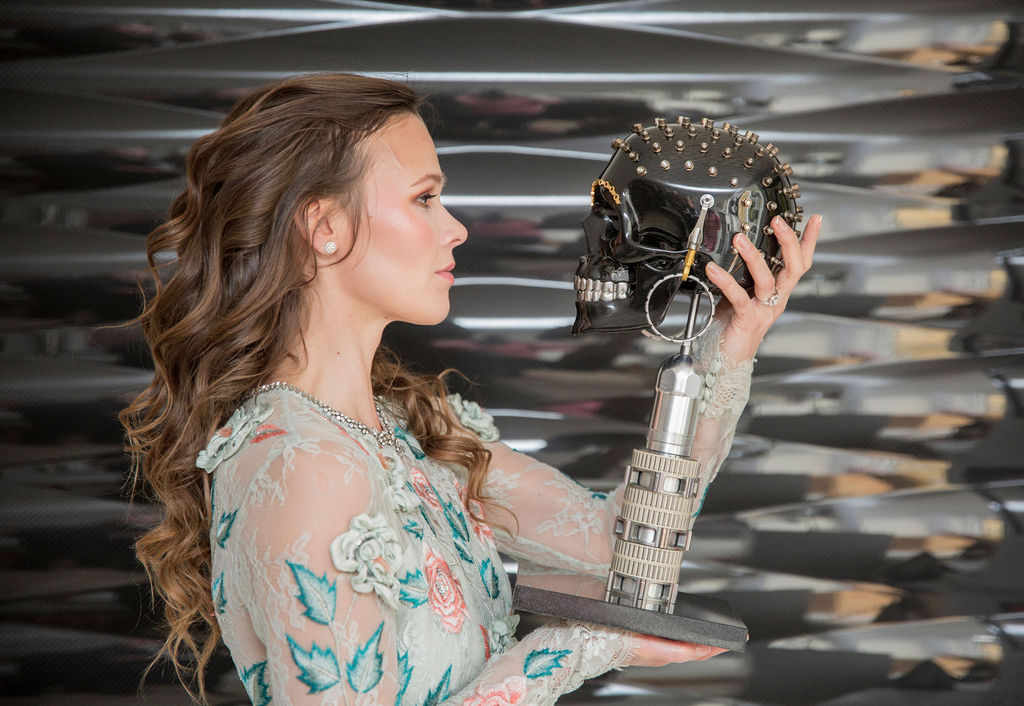Last Updated on: 22nd November 2023, 03:07 am
Renowned UK-based artist Alastair Gibson is making waves in the art world with his innovative use of carbon fibre to create anatomically accurate sculptures of natural and human forms. His latest masterpiece, God Save The African Queen, showcases his exceptional talent and pushes the boundaries of the medium while exploring themes of development and change.
God Save The African Queen is a striking human skull sculpture made entirely of solid carbon fibre. Its aesthetic beauty captivates viewers, but its conceptual origins and intricate design add layers of meaning and complexity to the artwork. Gibson’s unique approach stems from his extensive engineering background, including 14 years in the pinnacle of motorsport, Formula One. He incorporates genuine parts from modern Grand Prix cars into his sculptures, bridging the gap between natural forms and the evolution of technology.
This particular piece, God Save The African Queen, pays homage to Gibson’s South African heritage and celebrates the Ndebele, Xhosa, and Lesotho nations. It incorporates functional components from a Grand Prix vehicle, such as gold-plated electrical terminals used in the battery system and Inconel nuts from the exhaust system. The sculpture also features six sets of interchangeable earrings, symbolizing the importance of jewellery in African culture.
Gibson’s expertise in engineering and his passion for carbon fibre shine through in his artwork. Building upon his exploration of the material in the limited-edition sculpture series, We Are All Made of Stars, God Save The African Queen pushes the boundaries of composition in carbon fibre art. The sculpture is crafted from resin-impregnated carbon fibre sheets that are horizontally laminated, creating a tooling block from which the intricate skull design is sculpted using a 5-axis milling machine.
The result is a visually stunning piece that showcases carbon fibre in a new and original way, both artistically and in terms of design. Gibson plans to incorporate this unique approach into his future work, promising his boldest and most challenging sculpture to date in 2023. The waves and textures of the solid carbon fibre, accentuated by the lacquer finishing, lend a powerful and majestic quality to the artwork, reflecting its name, God Save The African Queen. It serves as a homage to our shared origins and the geographical cradle of humanity.
Gibson’s exploration of carbon fibre is not only a celebration of the material’s versatility but also a testament to the endless wonders found in the world. Through his art, he engages in a dialogue between artist and medium, challenging the boundaries of what is possible. By choosing to work with carbon fibre, Gibson not only acknowledges its significance as a building block of life but also envisions its potential as a material for the future of mankind.
ArtÓ gallery, opened in 2022, shares Gibson’s passion for visionary artists and has the privilege of working with him. The gallery embraces a fresh approach to art appreciation, emphasizing the enjoyment of art at leisure. Alastair Gibson’s collaboration with ArtÓ has been inspiring, and his practice continues to evolve in exciting new directions. His groundbreaking work pushes the boundaries of carbon fibre art and leaves a lasting impact on the art world.






